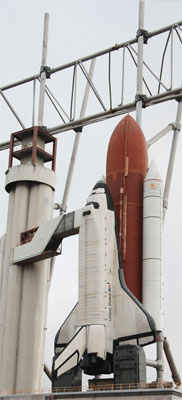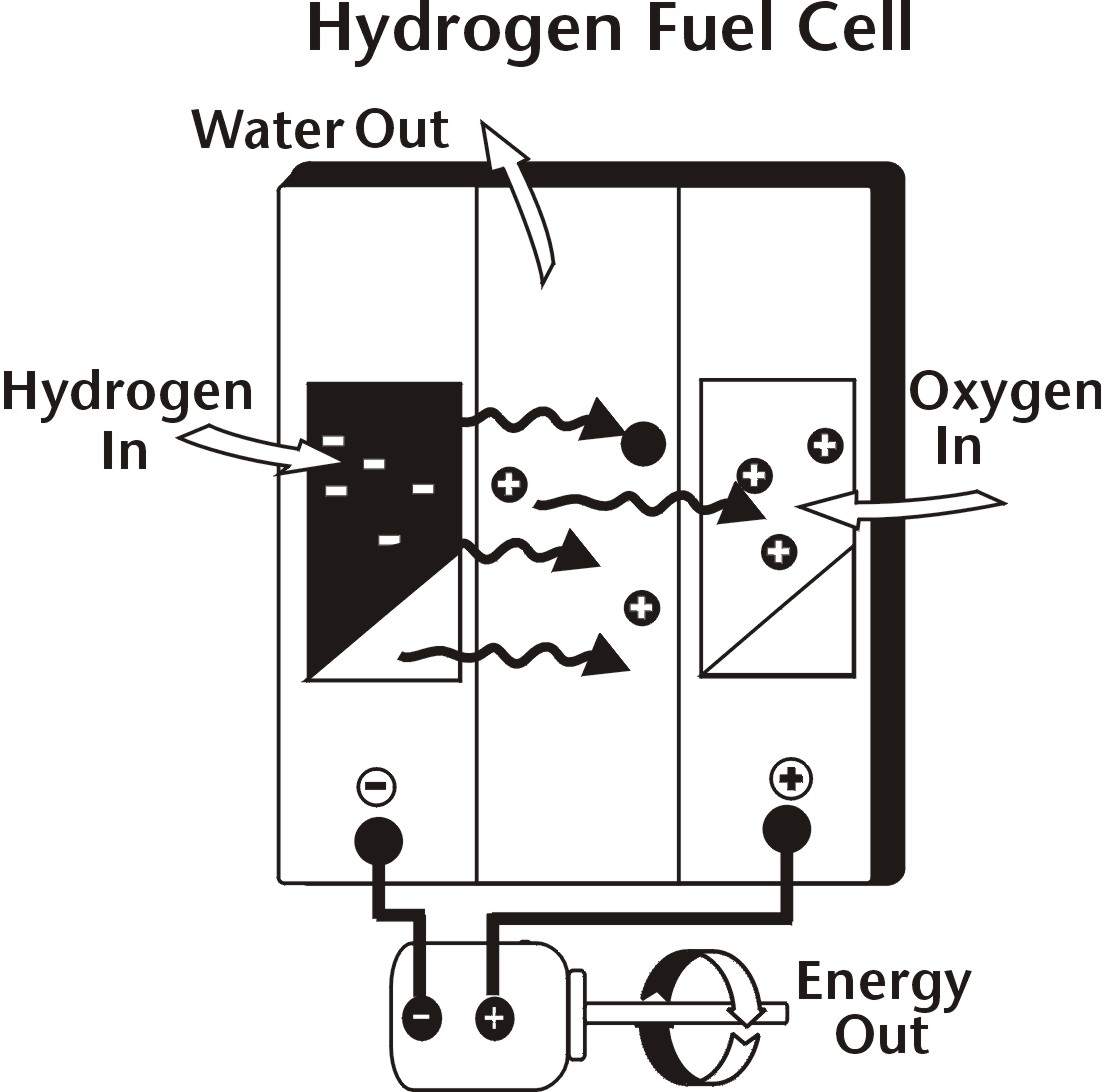|
|
||||||||||||
|
|
||||||||||||
What is Hydrogen? |
Did you know- hydrogen is the lightest element? |
Hydrogen is the simplest element known to man. Each atom of hydrogen has only one proton. It is also the most plentiful gas in the universe. Stars are made primarily of hydrogen.
 The sun is basically a giant ball of hydrogen and helium gases. In the sun's core, hydrogen atoms combine to form helium atoms. This process—called fusion—gives off radiant energy.
The sun is basically a giant ball of hydrogen and helium gases. In the sun's core, hydrogen atoms combine to form helium atoms. This process—called fusion—gives off radiant energy.
This radiant energy sustains life on earth. It gives us light and makes plants grow. It makes the wind blow and rain fall. It is stored as chemical energy in fossil fuels. Most of the energy we use today came from the sun's radiant energy.
Hydrogen gas is lighter than air and, as a result, it rises in the atmosphere. This is why hydrogen as a gas (H2) is not found by itself on earth. It is found only in compound form with other elements. Hydrogen combined with oxygen, is water (H2O). Hydrogen combined with carbon, forms different compounds such as methane (CH4), coal, and petroleum. Hydrogen is also found in all growing things—biomass. It is also an abundant element in the earth's crust.
Hydrogen has the highest energy content of any common fuel by weight(about three times more than gasoline), but the lowest energy content by volume (about four times less than gasoline). It is the lightest element, and it is a gas at normal temperature and pressure.
Energy carriers move energy in a usable form from one place to another. Electricity is the most well-known energy carrier. We use electricity to move the energy in coal, uranium, and other energy sources from power plants to homes and businesses. We also use electricity to move the energy in flowing water from hydropower dams to consumers. It is much easier to use electricity than the energy sources themselves.
Like electricity, hydrogen is an energy carrier and must be produced from another substance. Hydrogen is not widely used today but it has great potential as an energy carrier in the future. Hydrogen can be produced from a variety of resources (water, fossil fuels, biomass) and is a byproduct of other chemical processes. Unlike electricity, large quantities of hydrogen can be easily stored to be used in the future. Hydrogen can also be used in places where it’s hard to use electricity. Hydrogen can store the energy until it’s needed and can be moved to where it’s needed.
Since hydrogen doesn't exist on earth as a gas, we must separate it from other elements. We can separate hydrogen atoms from water, biomass, or natural gas molecules. The two most common methods for producing hydrogen are steam reforming and electrolysis (water splitting). Scientists have even discovered that some algae and bacteria give off hydrogen.
Steam reforming is currently the least expensive method of producing hydrogen and accounts for about 95 percent of the hydrogen produced in the United States. It is used in industries to separate hydrogen atoms from carbon atoms in methane(CH4). Because methane is a fossil fuel, the process of steam reforming results in greenhouse gas emissions that are linked with global warming.
Electrolysis is a process that splits hydrogen from water. It results in no emissions but it is currently a very expensive process. New technologies are being developed all the time.
Hydrogen can be produced at large central facilities or at small plants for local use. Every region of the country (and the world) has some resource that can be used to make hydrogen. Its flexibility is one of its main advantages.
 About 9 million metric tonnes of hydrogen are produced in the United States today, enough to power 20-30 million cars or 5-8 million homes. Nearly all of this hydrogen is used by industry in refining, treating metals, and processing foods. Most of this hydrogen is produced in just three states: California, Louisiana, and Texas.
About 9 million metric tonnes of hydrogen are produced in the United States today, enough to power 20-30 million cars or 5-8 million homes. Nearly all of this hydrogen is used by industry in refining, treating metals, and processing foods. Most of this hydrogen is produced in just three states: California, Louisiana, and Texas.
The National Aeronautics and Space Administration (NASA) is the primary user of hydrogen as an energy fuel; it has used hydrogen for years in the space program. Liquid hydrogen fuel lifts the space shuttle into orbit. Hydrogen batteries—called fuel cells—power the shuttle’s electrical systems. The only by-product is pure water, which the crew uses as drinking water.
 Hydrogen fuel cells (batteries) make electricity. They are very efficient, but expensive to build. Small fuel cells can power electric cars. Large fuel cells can provide electricity in out of the way places with no power lines.
Hydrogen fuel cells (batteries) make electricity. They are very efficient, but expensive to build. Small fuel cells can power electric cars. Large fuel cells can provide electricity in out of the way places with no power lines.
Because of the high cost to build fuel cells, large hydrogen power plants won't be built for a while. However, fuel cells are being used in some places as a source of emergency power to hospitals and to wilderness locations. Portable fuel cells are being sold to provide longer power for laptop computers, cell phones, and military applications.
Today, there are an estimated 400 to 500 hydrogen-fueled vehicles in the U.S., mostly in California. Most of these vehicles are buses and automobiles powered by electric motors. They store hydrogen gas or liquid on board and convert the hydrogen into electricity for the motor using a fuel cell. Only a few of these vehicles burn the hydrogen directly (producing almost no pollution). The present cost of fuel cell vehicles greatly exceeds that of conventional vehicles in large part due to the expense of producing fuel cells.
Hydrogen vehicles are starting to move from the laboratory to the road. One California family has recently leased a hydrogen car for personal use. The U.S. postal service, a package delivery company, a few Florida Park rangers, and a few private utility companies are also using hydrogen vehicles. It will probably be at least 10 years, though, before you can walk into your local car dealer and drive away in an affordable hydrogen-powered car.
Even then, you will need a place to refuel your hydrogen car. Currently, there are 63 hydrogen refueling stations nationwide, about half of which are located in California. This is the so-called “chicken and egg” problem that hydrogen developers are working hard to solve. Namely: who will buy hydrogen cars if there are no refueling stations? And who will pay to build a refueling station if there are no cars and customers?
One possible solution is to eliminate refueling stations entirely. Automobile manufacturers have already designed a refrigerator-sized hydrogen generator for your garage that works off electricity. Consumers would simply refill their cars with hydrogen each night while it is parked.
Hydrogen has great potential as an environmentally clean energy fuel and as a way to reduce reliance on imported energy sources. Before hydrogen can play a bigger energy role and become a widely used alternative to gasoline, many new facilities and systems must be built. We will need facilities to make hydrogen, store it, and move it. We will need economical fuel cells. And consumers will need the technology and the education to safely use it.
Last Reviewed: October 2008
Sources: Energy Information Administration, The Impact of Increased Use of Hydrogen on Petroleum Consumption and Carbon Dioxide Emissions, August 2008.
Energy Information Administration, Alternatives to Traditional Transportation Fuels 2006, May 2008.
The National Energy Education Development Project, Intermediate Energy Infobook, 2005.
EIA Main Home
Page • Related
Links • Kid's
Page Privacy • Contact
Us